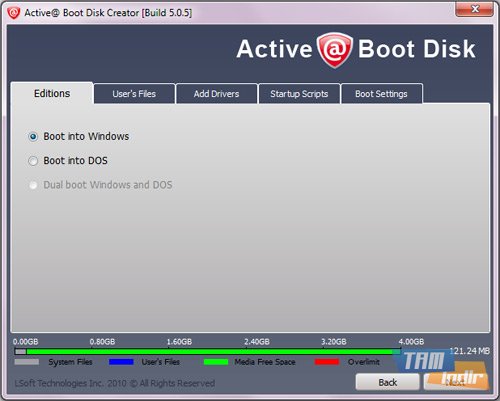
It is also possible to have a "hybrid" disk which is normally GPT-partitioned, but its protective MBR has an actual partition entry with the "active" flag pointing at the desired location (instead of the usual protective entry covering the whole disk), allowing GPT-unaware boot sectors to boot from a GPT disk. On GPT disks, the GRUB kernel is installed to a partition with a special type GUID (rather than being stashed in-between partitions), but only grub-install cares about this – the GRUB MBR still loads the kernel from a fixed LBA. You can set the GPT partition attributes through gdisk "extra functionality" menu.įor BIOS-style boot from a GPT disk using GRUB… well, GRUB never cared about "active" partitions or their VBRs to begin with – its MBR instead loads the GRUB kernel from a hard-coded start location (which is written to the MBR at grub-install time). Each partition in GPT has 64 flag bits (0–63) associated with it bit 2 is what Syslinux uses as the "Legacy BIOS bootable" flag.

#Quotactive boot disk code
In BIOS boot mode, even if the disk is GPT-partitioned, the initial boot code still lives at the same location in the "protective MBR" and still proceeds in the same way as with pure MBR disks:įor BIOS-style boot from a GPT disk using Syslinux, the Syslinux "GPT compatible" MBR uses a mechanism identical to the active bit.
#Quotactive boot disk install
For example, GRUB2 does not install itself at boot圆4.efi unless specifically told to treat the disk as -removable. While some operating systems install a copy of the bootloader at this location – allowing EFI boot to continue working in case the NVRAM boot entries disappear – not all of them do.

(For removable disks, though, the specification actually requires exactly one EFI partition.) It is probably safe to assume that the firmware will scan in partition-table order and will stop looking after the first match. The partition's "type GUID" doesn't necessarily affect the process – firmware may scan all partitions regardless of type. This process always uses the first partition that has such a file. See section 3 of the specification.)įor EFI boot from removable disks (or in situations where the NVRAM has no working boot entries), the firmware scans all partitions for a filesystem that it recognizes, then tries to boot a file from the fixed path \EFI\Boot\Boot.efi (e.g. (Multiple boot entries can be "active" at once (including multiple files within the same partition) most EFI implementations offer a menu to choose from them like you would choose from bootable disks. due to the disk being temporarily removed). This is stored entirely in NVRAM, not on the disk itself – all boot entries disappear when the firmware settings are reset, or when the NVRAM ("CMOS") is cleared for some reason, and sometimes the firmware will remove "stale" boot entries if it can't find the corresponding partition (e.g. Run efibootmgr (with the -v option on older versions) to see the currently stored NVRAM entries. Possibly at the time of boot failure that image was not connected.įor pure EFI boot, the firmware NVRAM holds "boot entries" that directly point to a specific partition by its GPT PARTUUID, and to a specific file within that partition. There are two unpartitioned "raw" disks, and there is a bootable medium (DVD image) currently attached that has a MBR label, an EFI (type 0xef) partition and a hidden (type 0x17) partition that is marked active. Maybe these facts make the situation even more complex: The bootloader in effect is GRUB2, and when the system boots I see to partitions on sda, but none of them having the "active flag": I can't change the setting, but I looked up that the firmware start option is set to "BIOS (recommended)". Possibly some "BIOS update" in VMware might have caused the problem, but it only came apparent when the OS was rebooted. Maybe I should add that the machine was running under VMware, and I'm not administrator of the VMware configuration.

So I'm wondering what might have damaged the boot mechanism for that message to appear.
#Quotactive boot disk update
When GPT does no longer have that concept of an "active partition", how is the operating system to boot determined then? BackgroundĪfter some OS patch update the system didn't boot with message "no operating system found", and I had to reinstall the boot loader. According to there is no such concept as an "active partition" when using GPT.ĪFAIK with MBR partitioning, some minimal code in the MBR looks for an "active partition" and executes some boot code in that partition.


 0 kommentar(er)
0 kommentar(er)
